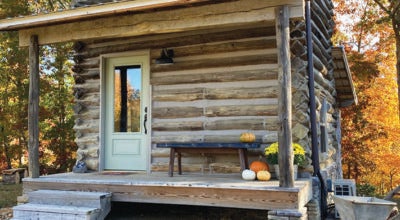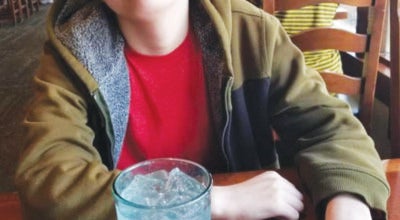The Literary Corner: Renegade Writer’s Guild
Published 9:18 am Thursday, August 4, 2022
|
Getting your Trinity Audio player ready...
|
Tiger Lilies
By Julie Terry Cartner
Tears held fiercely in abeyance, Jodi slipped quietly into the patch of woods that separated the field from her grandmother’s house. Torn between anger and sadness, Jodi focused on the anger to keep the tears in check. She and her friends had been having such fun until the boys wanted to play kickball. Jodi hated kickball, but she was determined to be a good sport. That was, until she missed the one ball that had come her way far out in the field. John, one of her teammates had jeered at her. “You’re no good freckle-face. Why don’t you go home?” Then he added, “Maybe your freckles covered your eyes, and you can’t see. I’m glad I don’t have any freckles!”
Embarrassed and angry, Jodi was sure the boy would next tease her about her blush, and so, when nobody was looking her way, she escaped. Now, in the relative coolness of the woods, she climbed her favorite tree, a linden with strong branches and thick leaves. Only then did she let the tears flow. Stupid freckles, she thought. I hate them. Resting against the trunk, she closed her eyes and let her mind drift.
“You shouldn’t be ashamed of your freckles,” a voice spoke firmly, “after all, look at us.”
Jodi opened her eyes, not knowing what to expect, but was completely taken by surprise when, at first, she saw nothing. “Who’s there?” she asked.
“Look down here,” came the prompt response.
Peering down through the branches, Jodi saw the flowers, the tiger lilies, which normally resided beside her grandmother’s stone wall, but now they were surrounding her tree. At first shocked into speechlessness, she could only gape, then, finally finding her voice, she asked the obvious. “How did you get over here, and can you actually talk? How can that be?”
“First, let me tell you a story. A legend from Korea says the tiger lily was created by a mystic who removed an arrow from a tiger. They became friends and when the tiger died, the hermit transformed his body into a tiger lily to preserve their friendship. Later the mystic drowned, and the tiger lily spread down the stream looking for his friend. It has since spread all over the world as a symbol of their friendship. Flowers and people can have a strong bond.
“There are many things most people don’t understand. It takes a very special person to be able to hear the voice of a flower. You, child, are one of the special ones.” Seeing the girl smile, the flower continued. “Now, I want to ask a question of you. You often sit on that stone wall and just look at us. And sometimes, when it hasn’t rained, you give us water. Is that because you hate us or think we’re ugly?”
“No, of course not, the girl protested. I think you are the most beautiful flowers.”
“Why?” came the quick retort.
“Well,” the girl replied, “I love your bright orange petals and your black spots. Lots of flowers are orange, but only you have those bold, black spots.”
“Exactly!” the flower smiled. Now, let me be your mirror. You are like us with your beautiful spots. Every freckle is a place where the sun has kissed you.”
Seeing Jodi’s disbelieving look, he continued. Legend says that if you have freckles, it’s because you smelled a tiger lily. Are you sorry you have enjoyed our scent?”
“Of course not,” Jodi vehemently denied. But must I have freckles?
“Look at it this way,” the flower continued. “You like me for what I am, right? And we wouldn’t be what we are without the black spots, our freckles, right?” Getting another nod of agreement, he kept talking. “Your freckles make you unique, just like us. Besides, tiger lilies are believed to provide protection from harm and evil. That’s one reason people plant them around their houses. They also represent nobility and pride, and in Buddhist cultures, they represent mercy and compassion. You, my child, are a human tiger lily. Wear your spots proudly. Understand that you are special, just like us. And most importantly, instead of being angry at those boys, who just don’t know any better, be compassionate to them. Show them mercy. One day they’ll understand just how extraordinary you are.
Crossing Rivers
By Marie Craig
When we zoom across a bridge in Davie County with water underneath, we don’t give it a second thought. We take this transportation construction for granted. However, previous to the 1920s, travelers wanting to cross the Yadkin River had to depend upon ferries.
There are several photographs of these ferries from that historic time. The Internet has a few identified pictures with descriptions. Using www.newspapers.com and searching for “Mocksville” and “ferry” gave me 290 interesting articles.
The ferry with several descriptions in The Davie Record was Ellis’ Ferry. It was slightly northeast of the community of Elbaville. 7 December 1910: “Mrs. W.R. Ellis of Advance put in a new ferryboat at the Old Ellis ferry the past week.” In the same newspaper edition: “The new boat at Ellis’ ferry is a dandy, and is ready for business.” 13 September 1911: “Mrs. Jessie Zimmerman, Ollie Hege and a Miss Fry will be baptized at Ellis Ferry Sept. 17th at 3 o’clock.” The approximate latitude and longitude of the location of Ellis ferry is (35.920, -80.372). [You can type these numbers into an online map site and see the location.]
J.T. (John Thomas) Alderman (26 June 1953 – 12 April 1932) was the superintendent of Davie schools from 1885 to 7 September 1891, and in 1887, he compiled a map of our county. Included are landowners, schools, communities, fords, creeks, and 12 ferries.
Wilson F. Merrell (29 November 1850 – 21 June 1931) was a teacher in Davie schools for 62 years. He was also a county and Fork Baptist Church historian, a postmaster, and a merchant in Fork Church. He drew a map in 1928 similar to Alderman’s. His map includes nine ferries. [These two maps are for sale in the History Room at Davie County Public Library.]
The Hillsdale area was previously named Hall’s Ferry for the ferry which transported people, buggies, horses, and livestock between Davie County and Forsyth County. These ferries were state regulated with standard costs for services. For example, a man and a horse in 1848 cost 6 ¼ cents for crossing the water.
There is a ferry on the northeast edge of North Carolina that I was pleased to ride a few years ago. We were able to exit the car and enjoy the beautiful ride from Currituck to Knotts Island. About 1980, my family was on a trip in central US using back roads for interest. We came to a river which used a ferry for crossing. The water was not very wide, but it was a very swift current. The ferry was only wide enough for one car, so we had to stay seated inside. The ferryman took us across the swift water and aimed for the exit point upstream because the current pushed the ferry sideways. My husband had been driving when we entered, and without realizing it, he was turning the steering wheel to help guide the ferry to land at the right place. We all had a good laugh about that.
Birthday Memories
By Gaye Hoots
This week I celebrated my 77th birthday; life is still good, and so are most of my memories. I spent the first 17 years of my life in Advance as Gaye Hoots, where we lived with my paternal grandparents, Jasper and Maude Hoots, on a farm overlooking the Yadkin River. Life was good; there were horses, pigs, cows, dogs, and cats, and I had free rein with Grandpa, who spent most of his time with me. He had the reputation of being a strict disciplinarian, but with me, he was more of a partner in crime.
For the next 6 or 7 years, we lived at the Marchmont on 1000 acres that I never tired of exploring. The house had over 12 large rooms built after the Civil War but was a plantation-style home that the March family had built. Our family had increased by 2, a sister 2 years younger and a brother 6 years younger. There were many neighbors and family friends who made life even better; they visited often, and we played for hours. We worked with others on the farm and made many school friends. My parents worked hard and expected us to also, but they were always open to having friends and family visit.
Our next move was to the farm in Advance where my sister and her husband live. My dad purchased it, but it was previously owned by Anderson Potts. We left the dairy farm but took a Jersey cow I milked twice daily until I was 17. We grew more tobacco, and I completed 3 years of high school. I played basketball through my junior year, which was my primary interest, but at the end of my junior year and 2 days after my 17th birthday, I married Roy Potts.
I finished high school with my class and entered the working world on the last day of my senior year as a teller in Cooleemee for the summer. A job followed this in the bookkeeping department at a bank in Winston, where I worked until our first child was arrived, a little girl born when I was 6 months pregnant and weighing 1 lb. 11 oz. She survived only 24 hours and is buried beside Roy at Advance Methodist Church.
My next job was at Hanes in the computer department, where those first computers were room-sized. This lasted until I became pregnant with Cami, and my doctor told me it was unsafe to work. I was confined to home except for doctor visits until she was born. We started building the house that Scott Chandler now lives in then and completed it when Kendra was born 2 years later.
When the girls were 5 and 7 years old, Roy and I divorced, and I worked as a teacher’s aide at Shady Grove. Ellen Schroeder was the special ed teacher there, and she taught me lessons about a child’s most basic needs. She accepted each child regardless of how difficult they were to handle, their poor hygiene, their ability to learn, or their treatment of other children.
The lessons I learned working with Ellen were more valuable to me than what I learned in the next several years as I completed a 2-year nursing degree, a BS in nursing, and an MSN in nursing. It shaped my decision to become a psychiatric nurse and made me more accepting of those who were struggling with issues beyond their control.
One of my professors told our class that if we chose nursing expecting appreciation, we would be disappointed. Surprisingly, most of my patients expressed appreciation. Sadly, the working conditions have deteriorated, and it is challenging to balance work assignments. There are still no limits on how many patients a nurse can be assigned. The last 2 years with COVID patients made it even more unsafe. I have been retired for many years, but Kendra is a nurse, and Cami is a PA, so I still have my finger on the pulse of nursing. I loved my work and most of my coworkers, but it was a challenge then, and a greater challenge now.
My granddaughter has chosen a career working with autistic children, so it appears we all like a challenge and the rewards that come when you feel you have made a difference in someone’s life. Most of my memories are sweet, and I was fortunate to have good family, schools, churches, and a loving community. Some memories are painful, but we all must live with them. I am grateful for all the opportunities I have had and all the help I have had along the way.





